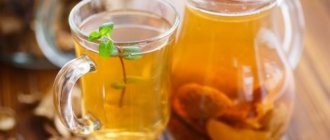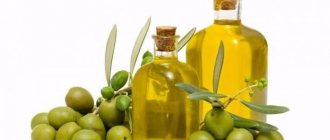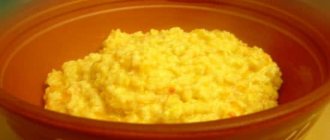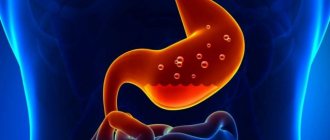From a biological point of view, nuts are a very healthy product. They are able to provide a person with a huge amount of vitamins, minerals, proteins and essential amino acids. At the same time, they are considered difficult for the digestive tract, and during the digestion process the main burden falls on the pancreas tissue. Therefore, in the question of whether or not nuts are ok for pancreatitis, one should rely on the period of illness (acute or remission), the patient’s well-being and the form in which the dish is served.
Is it possible to eat nuts with pancreatitis?
For pancreatitis and cholecystitis, this is an undesirable product in the diet. The restrictions are justified by the fact that they contain a lot of fats of plant origin, as well as proteins that require additional synthesis of digestive enzymes. They are produced by the tissues of the pancreas, and an increase in load provokes an exacerbation of the disease.
To break down fatty acids, the pancreas requires more enzymes, and the organ begins to work more actively. This has a negative impact on your well-being - pain returns, heaviness in the abdomen, diarrhea or constipation are possible. This does not mean that nuts are completely prohibited for pancreatitis. You can use them, but carefully - no more than 2-3 times a week and about six months to a year after an exacerbation. Only certain species are allowed.
Types of pancreatitis
With bloating and pain on palpation, doctors predict inflammation that occurs in the pancreas - pancreatitis. The victims of this insidious disease are people who are prone to eating fatty and spicy foods, alcohol and overeating. There are 3 types of pancreatic disease:
- Acute pancreatitis has a severe course of the disease, during which the pancreas digests its own enzymes. And the infectious-inflammatory process, which is associated with pancreatic necrosis, moves into the abdominal cavity, beyond the pancreas.
- Chronic - has the character of a gradual change in the cellular composition of the pancreas. This type of pancreatitis has a mild course of the disease (exacerbations occur up to two times a year), moderate chronic pancreatitis (with a frequency of exacerbations up to four times a year) and a severe form of the disease (more than five times a year) with a concomitant complication in the form of diabetes.
- The reactive phase is more likely not a disease, but the body’s reaction to fatty foods, poisoning, and also a response to gallstone disease.
Permitted varieties and their healing properties
What nuts can be included in the diet if pancreatitis is diagnosed? The functioning of the pancreas is favorably influenced by fruits that contain the highest concentration of coarse fiber.
Cedar pine seeds
Pine nuts are not only allowed to be consumed for pancreatitis. They are also used as a folk medicine for inflammation of the pancreas. Fresh pine nuts are peeled and fried in a frying pan. After this, they are better absorbed and acquire a pleasant taste.
Still, you should not overuse this oily product, so as not to provoke the opposite effect. A patient with pancreatitis is allowed to eat no more than 50 g per day.
Walnuts
Walnuts are also allowed for pancreatitis, although in very small quantities.
The composition of the kernels is dominated by B vitamins, as well as a lot of iodine. For pancreatitis, you can eat no more than 2-3 walnuts per day, and not every day. It is useful to chop them and add them to salads and cottage cheese.
Hazelnuts and hazel
Allowed for pancreatitis, but with restrictions. A patient can eat no more than 30-50 g per day. Hazelnuts contain stearic and oleic acids, an excess of which can worsen health.
Chestnut
Among all the varieties approved for use for pancreatitis, chestnut is the most useful. It is rich in fiber, which does not create additional stress on the pancreas, but, on the contrary, improves digestion. Chestnuts should not be eaten raw. In order for them to be fully absorbed by the gastrointestinal tract, you should first fry them in a frying pan or bake them in the oven. It is recommended to eat no more than 3 chestnuts per day.
Cashew
Contains easy-to-digest fiber. Eating 30 grams of cashews daily will not disrupt the functioning of the pancreas in people with pancreatitis. Cashews rarely cause allergies and are allowed to be consumed raw and fried. It is best to eat a few pieces after eating the main course, that is, not on an empty stomach. These fruits improve digestion, saturate the body with B vitamins and minerals (molybdenum, potassium, copper, zinc).
Patients with pancreatitis are also allowed almonds (but limited, as they can cause allergies) and pistachios.
For whom are they contraindicated?
As stated earlier, you can and even need to eat nuts for pancreatitis. But for some patients there are still restrictions. Patients for whom nuts are strictly contraindicated:
- Patients with severe forms of the disease, because it is fatty and rough food that helps to worsen the condition.
- In the chronic course of the disease in the acute phase.
- In case of acute pancreatitis, nuts should be avoided for 1-1.5 years.
The main rule for eating nuts is a certain amount that will be beneficial for a person and not harm him. With the necessary drug treatment and following a certain diet, pancreatitis will go into remission or, in the reactive form, will go away without a trace.
What to avoid
Patients with pancreatitis need to completely exclude products made from nuts from their diet, but only after they have been industrially processed. For example, peanut butter, sugared kozinaki (from nuts, seeds, puffed rice or corn), any chocolate-covered nuts. Some specific species are also prohibited.
Peanut
When asked if peanuts are okay for pancreatitis, doctors say a categorical “no.” It has been proven that groundnuts negatively affect the functioning of even a healthy pancreas. In people with inflammation, eating even a small amount of peanuts causes a transition to the acute phase. Therefore, peanuts are prohibited for pancreatitis. This is explained by the fact that it contains too many fats, which force the diseased pancreas to work harder and upset the functioning of the entire gastrointestinal tract.
Brazilian
It is classified as prohibited for pancreatitis due to its high fat content, which accounts for 70% of its total composition. Even small portions can transfer chronic pancreatitis into the acute stage, causing severe pain, spasms and gastrointestinal upset.
Nutmeg is also among the prohibited foods. It is used as a seasoning due to its ability to stimulate the production of digestive juices, which is very harmful for pancreatitis.
Beneficial features
The main rule when eating with pancreatitis is not the classic eating three times a day, but fractional meals. It is recommended to eat at least six times a day without loading the stomach. Nuts are quite suitable for creating a diet; they do not need to be heated and the kernels do not spoil in the refrigerator.
The product contains Omega fatty acids. They have a pronounced anti-inflammatory effect, improving health. The composition includes lutein, carotene and a host of other natural antioxidants that strengthen the body and help protect tissues during destruction. Nuts contain vitamin E, which is essential for diets.
Three recipes for delicious dishes with nuts
To make your daily menu varied and not eat nuts only raw or fried, it is recommended to prepare tasty and healthy dishes from them. Here are a few recipes that are suitable for patients with pancreatitis.
Chicken with prunes and nuts
You will need to take:
- 500 g chicken breast,
- 50 g prunes,
- 50 g pine nuts.
The chicken is boiled in water and then cut into slices. Prunes and pine nuts are added to the meat. Then the dish is seasoned with homemade mayonnaise and 1 medium-sized cucumber is crumbled into it. The salad can be eaten as a separate dish or as an addition to a side dish.
Baked rolls
This meat dish is prepared from turkey fillet and walnuts. 1-2 kernels are wrapped in turkey meat and formed into meat rolls. To secure them firmly, it is recommended to chop off the edges of the fillets with toothpicks.
After this, the rolls are placed in the oven and baked for 30 minutes at 180 degrees. Due to the high concentration of fats contained in nut kernels, the rolls are juicy and have a specific taste.
Sweet chestnuts
Dessert, for the preparation of which you will need to take:
- 500 g chestnuts,
- 150 g powdered sugar.
Place the chestnuts in the oven, where they bake for 20 minutes at 140 degrees. After this, remove the chestnuts and sprinkle with powdered sugar.
Patients are allowed to eat no more than 3 sweet chestnuts per day. If your health worsens and symptoms of exacerbation appear, you should immediately seek help from an endocrinologist.
Prohibited Products
Foods that are prohibited in the acute stage of pancreatitis are not recommended to be eaten during the period of remission. Sometimes you can allow yourself some kind of delicacy, but you must remember that there is a risk of harm to the body.
List of prohibited foods for pancreatitis:
- alcohol in any quantity;
- fresh bread, buns;
- coffee and cocoa;
- carbonated drinks;
- fatty meat soups;
- lard, pork, duck, lamb;
- grapes, dates, bananas;
- mushrooms;
- all legumes;
- spicy seasonings;
- onion, garlic, radish, radish;
- fried foods;
- marinades, canned food;
- sausage, ham;
- fatty fish;
- boiled yolk;
- fast food.
Rules for eating nuts for pancreatitis
The main task of correct treatment in the presence of pancreatitis is to prevent exacerbation. By adhering to the rules, you will keep your pancreas calm and diversify your diet:
- You can start eating nuts six months after the last exacerbation of chronic pancreatitis or a year after acute,
- nuts are allowed to be eaten 2-3 times a week, no more,
- eat no more than 30-50 g per day, regardless of the variety,
- do not add salt and spices to them,
- Chew well to make it easier for the digestive tract to absorb the product,
- Avoid eating damp fruits damaged by mold and rot.
These simple rules are relevant for patients with pancreatic inflammation who do not want to completely exclude nuts from their diet, but at the same time comply with all dietary norms.
1
The benefits of nuts for the body
You need to be especially careful when consuming these healthy foods because they contain a large amount of fiber. It affects the digestive organs in such a way that the intestines begin to work actively.
But it is still necessary to eat nuts, because they are simply a storehouse of vitamins and beneficial microelements. The most important substances contained in them are phosphorus, iodine, calcium, potassium and iron, and many vitamins.
A person who eats nut dishes quickly becomes full. This is because they contain nutrients such as protein, fiber and fat. And in the latter most of all.
Useful qualities of walnuts
The chemical composition of walnuts is very diverse. They contain vegetable protein, essential amino acids, fatty oils and vitamins necessary for the human body, which is why they have long been used in medicine.
Walnuts have a wide range of beneficial properties:
Walnuts
- Medicines are produced from walnuts that help destroy pathogenic microorganisms, strengthen the immune system, and protect against parasites.
- Walnut leaves are used to treat inflammatory processes and heal wounds.
- Walnut kernels improve brain activity, help with memory disorders, lower cholesterol, and strengthen blood vessels.
- Nuts are indicated for hypertension, atherosclerosis and other pathologies of the cardiovascular system.
- This product is high in vitamin E, which protects the heart, so it is recommended to eat nuts if you have heart disease.
- Antioxidants in walnuts prevent the development of cancer and have a beneficial effect on reproductive function in men.
Question of quantity
A person who suffers from pancreatitis can afford such a product when his condition has become completely stable. To prevent a recurrence of an exacerbation, it is necessary to carefully select nuts, excluding overdried ones, as well as those on which traces of mold and rot have appeared. Almost all types of product can be consumed raw, except chestnut, which must be boiled, baked or fried.
For pancreatitis, it is recommended to chop walnuts and hazelnuts, so they are digested faster and easier. In addition, they can be combined with foods such as cottage cheese, various salads and meat dishes. Sweet or salty nuts can make the patient feel ill, so it is worth excluding “nut” snacks.
Experts advise eating nuts before bed, as they are protein foods, and the absorption of these substances is much better while a person is sleeping. If you are sick, you should eat nuts without the skin. In this case, it is recommended to pour boiling water over the almonds for 2 minutes, rinse with cold water and let them dry a little so that the skin can be removed more easily.
The heaviest type is peanuts. Doctors do not recommend taking it as food to those who suffer from pancreatic diseases. The result of its use can be:
- intestinal disorder;
- gas formation;
- the onset of the exacerbation stage.
Pine nuts have been used for pancreatitis for a long time - this is an approved product. Before use, they were calcined to facilitate the process of removing the shell and improve the taste. When the disease is acute, you need to reduce the intake of cedar oil.
Before you start consuming the product, you should consult your doctor to find out whether nuts are allowed for pancreatitis. As a preventive measure, you can eat pine nuts and follow medication treatment. In any case, there is no need to increase the rate of use of this product.
Product advantages and disadvantages
Almost every person is ready to snack on delicious nuts between full meals. This delicacy does not require preparation and suppresses hunger well. All these products are rich in vitamins and microelements. They are rich in phosphorus, potassium, iodine, iron, calcium, vitamins A, B and E. In addition, nuts are quite nutritious and contain a large amount of fiber and protein. They should be consumed with caution even by a healthy person, because most of them are fats.
In what cases are nuts contraindicated?
Taking nuts is strictly contraindicated in the following situations:
- In case of exacerbation of the chronic course, a ban is imposed on nuts for six months from the moment of remission (the exception is chestnuts - they are taken after two to three months);
- In severe cases of any of the forms;
- Patients who have suffered acute inflammation should not eat nuts for a year after recovery.
Thus, patients with pancreatic inflammation need to be very careful about following the regimen of eating nuts and other fatty foods in order to avoid unpleasant consequences for their condition.
Contraindications for eating almonds
Despite the fact that the nut is very healthy, it is not always possible to eat it. And in some cases, the beneficial properties of a product can turn into harmful ones. Contraindications for consuming almonds include:
- Personal intolerance.
- Obesity.
- Heart rhythm disturbance.
- Organic pathologies of the nervous system.
- Exacerbation of digestive diseases (gastritis, ulcers, pancreatitis, irritable bowel syndrome).
- Presence of stones in the kidneys and bladder.
It should be noted that this nut is considered highly allergenic. In case of personal intolerance, its use can cause not only skin rash, redness, itching, but also dizziness, nausea, heartburn, gastrointestinal colic, and impaired consciousness. Therefore, if a person has never tried almonds before, at first they are allowed to eat only a couple of nuts a day to check the body’s reaction.
Since the kernels contain a large amount of fat, the nut is not recommended for people with large weight and heart rhythm problems. Excess weight has a very negative impact on the functioning of the cardiovascular system.
Almonds activate the production of the hormone adrenaline, so this product is contraindicated in case of organic disorders of the nervous system.
Despite the fact that eating nuts has a beneficial effect on the processes of digestion and metabolism, in case of exacerbation of diseases of the gastrointestinal tract, it is prohibited to eat this product. The reason for this is the enrichment with fats, fatty and organic acids, and fiber. Such substances, when inflammatory processes are activated, will begin to irritate and injure the tissues of the digestive organs, which will lead to the development of symptoms such as:
- nausea;
- vomit;
- colic;
- bowel dysfunction;
- increased gas formation;
- flatulence;
- bloating.
Nuts have a diuretic effect, so if you have kidney or bladder stones, the product can provoke their movement. This causes severe pain to the patient and can cause blockage of the ducts, which is a very dangerous condition.
Medicinal properties of pine nuts
Due to such a rich, valuable composition, cedar nuts have a wide range of useful properties:
- Saturate the body with the elements necessary for life.
- Strengthen the immune system.
- Helps normalize the functioning of the thyroid gland.
- Helps relieve inflammatory processes.
- Reduce the intensity of pain.
- Helps strengthen blood vessels and heart muscle, normalizes heart rate.
- They are a powerful antioxidant.
- Strengthen cell membranes, protect them from the destructive effects of irritating factors.
- Helps normalize digestive processes.
- Normalize carbohydrate, energy metabolism, redox reactions.
- They take part in regulating the acid-base balance.
- Maintains water-acid and electrolyte balance.
- Promotes the healing of damaged tissues of the digestive organs.
- Gently stimulate intestinal motility.
- Improves the conduction of nerve impulses.
- Activate brain activity.
- Activate blood circulation, improve blood composition.
- Helps strengthen bone tissue, teeth, and hair.
- They have a beneficial effect on the skin, improve its tone and elasticity.
Therefore, pine nuts are very popular in folk medicine and cosmetology. They are mainly used for the treatment and prevention of ailments of the cardiovascular, digestive, nervous, and reproductive systems, as well as for replenishing the body’s reserves with essential microelements and vitamins.











